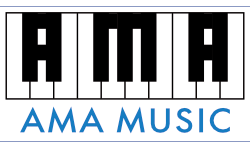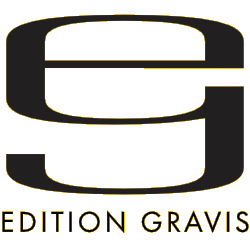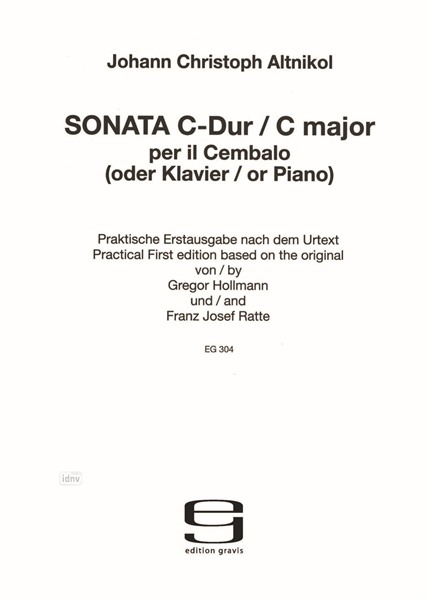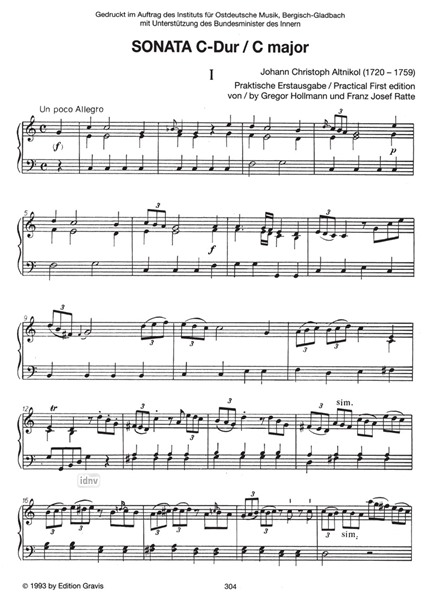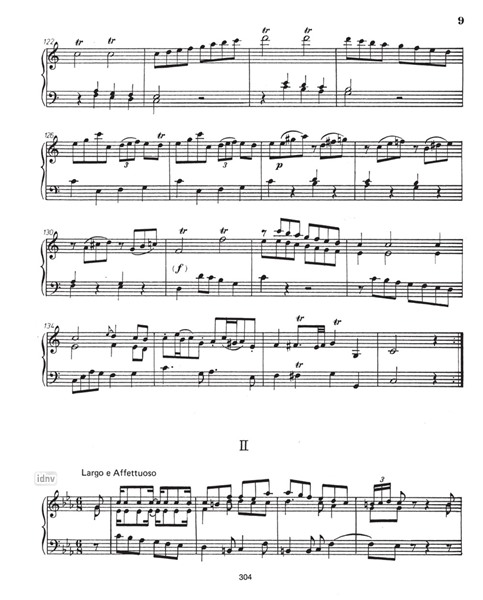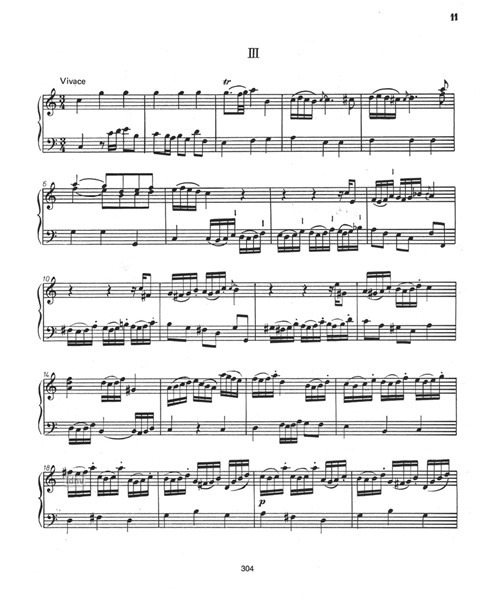Your basket is currently empty!
Sonate C-Dur für Cembalo oder Klavier
Instrumentation: Harpsichord or Piano
Harpsichord or Piano
Weight: 92 g
Edition Gravis / EG304
ISMN: 9790205702076
incl. VAT
plus delivery costs
Harpsichord or Piano
Weight: 92 g
Edition Gravis / EG304
ISMN: 9790205702076
incl. VAT plus delivery costs
9,95 €
Delivery time: 10 days
Preface
[…]
The title page of the manuscript of this sonata in C major bears the following inscription: Sonata/per il/Cembalo solo/Altnikol/Organist Naumburg/J.S. Bach’s son-in-law/Composer’s own handwriting (Mus. MS30194 in the music division of the Staatsbibliothek Preussischer Kulturbesitz).
That means that it was probably composed during his stay at Naumburg. It is characterized by the composer’s enteavor to comply with his teacher’s demands for a wrought kind of music while also accomodating the new aesthetics of clarity and agreeableness. In this, it is an excellent example of this period of transition. the mainly homophonic notation, latently for two voices, the obvious preference for the treble, the modern accompanying figures (drum basses), the slow change of harmonies, and a tendency to form two-bar or four-bar phrases are stylistic devices that were in keeping with contemporary tastes in music and dominate the lively, galant character of this sonata. Polyphonic passages (in the third movement) and Baroque serial and sequencing techniques are integrated in this modern style of notation. In its formal arrangement, which clearly shows the beginnings of the sonata form, Altnikol strives to comply with the traditionalist demands for a continuous basic Affekt and – an aspect where J. S. Bach’s strong influence is evident – to combine all three movements into an meaningful whole by using related motifs and themes.
Gregor Hollmann / Franz Josef Ratte
